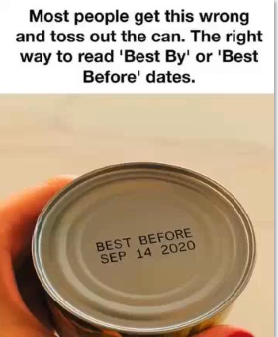
Most people assume canned foods are unsafe after their “Best By” date, but that isn’t usually true.
Those dates refer to quality—not safety. “Best By” and “Best Before” simply mark when the manufacturer expects peak
flavor or texture. Once that date passes, the taste might decline slightly, but the food is often still fine to eat.
The only truly safety-related label is “Use By,” typically found on perishable items like dairy or meat, not canned goods.
When stored properly—cool, dry, and out of sunlight—most canned foods last one to five years past the printed date.
High-acid items like tomatoes or fruits expire sooner, while low-acid foods such as beans, corn, and meats can last far longer.
According to the USDA, canned foods can remain safe indefinitely if the can stays intact.
However, certain warning signs mean a can should be thrown away: bulging, rusting, leaking, deep dents, or odd smells and spurting liquid when opened.
Understanding expiration labels helps prevent waste. Each year, millions of tons of food are discarded unnecessarily, even when safe to eat.
By recognizing the difference between quality and safety dates, households can save money, cut waste, and reduce environmental impact.